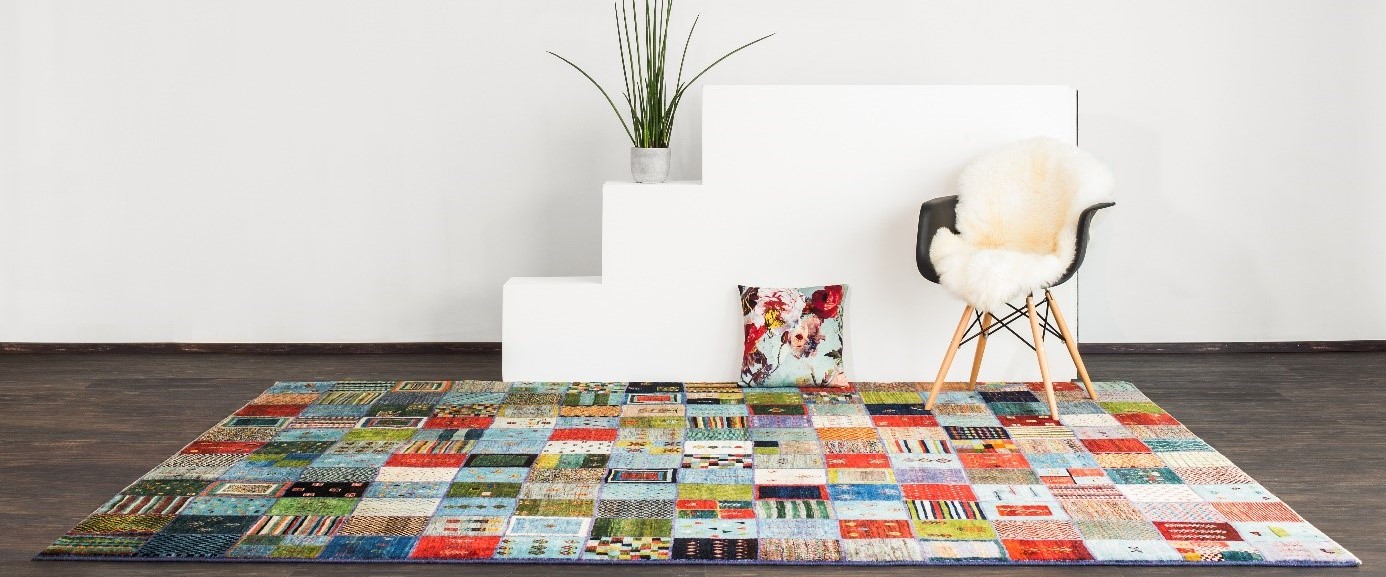We take you on a journey to Iran and show you how a cuddly soft sheep's wool, a natural and beautiful Gabbeh rug wird. The production process of a hand-knotted unique rug takes about a year. During this time, the unfinished rug goes through many steps. Most of it is pure handwork, which is why these rugs are a very special kind of art. Only genuine Gabbeh rugs from southern Iran have the charm and character of an original. There are many copies of these genuine works of art. The originals from Iran are the distinctive rugs, knotted with the joie de vivre of the nomads. "Nomadic rugs" tell about the stories and myths from Persia and the weavers still knot the rugs in the wild, in the Zagros Mountains of Iran.
Content overview
To go directly to a specific area, please click on the respective link.
Step 1: Shearing the sheep
The winter wool of fat-tailed sheep is the highest quality and most durable wool that can be used for rug making. Due to its high fat content, the wool is cozy and soft, has a beautiful natural luster and is very durable. The sheep are sheared by the men in the spring and the wool is washed at the river. After that, the wool is spun by hand by the women.
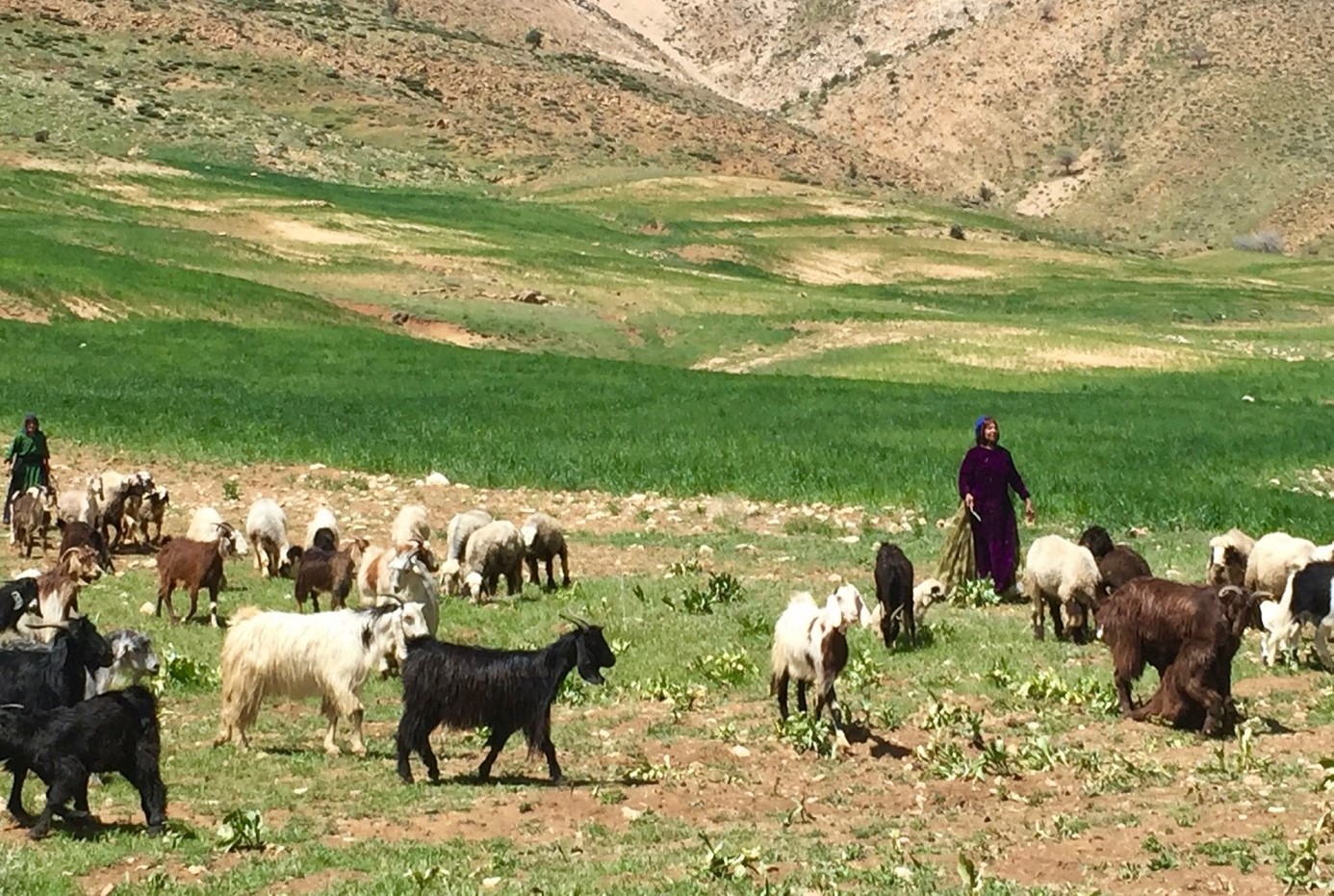
Step 2: The wool is sorted and dyed
After the wool is spun, it is sold to a rug manufacturer where it is sorted based on color and quality. The dark wool is used for dyeing with darker colors and the light wool for light and bright colors. If a rug is mottled beige, brown or gray, only the natural Zagros wool was used for it, as it comes from the sheep.
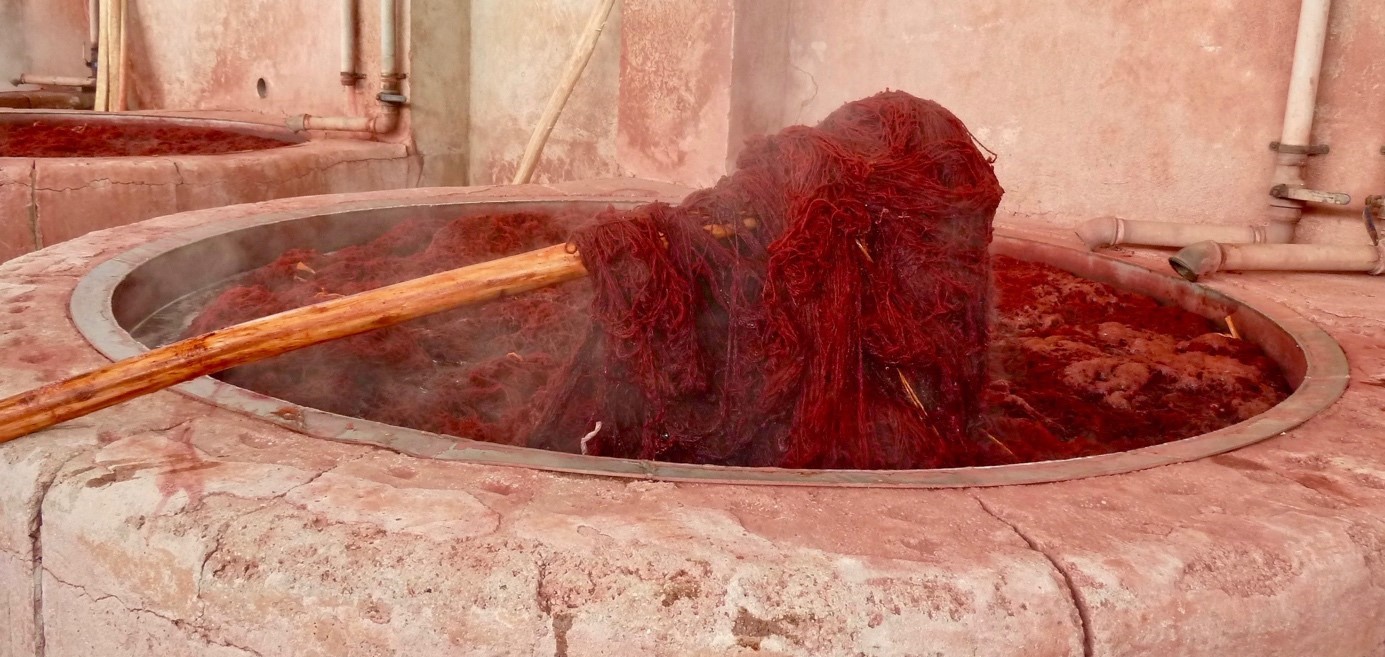
After sorting, the wool is taken for dyeing. Only natural dyes obtained from plants, tubers, bark and flowers are used in the dyeing process. The art of dyeing is still passed down from generation to generation. It takes years of practice before a dyer perfectly masters this art.
The dyeing process takes up to 24 hours. This is how long the wool is boiled in a large stone kettle with the roots and flowers until the wool has absorbed the color. After the wool is finished dyeing, it is hung outdoors and air-dried.
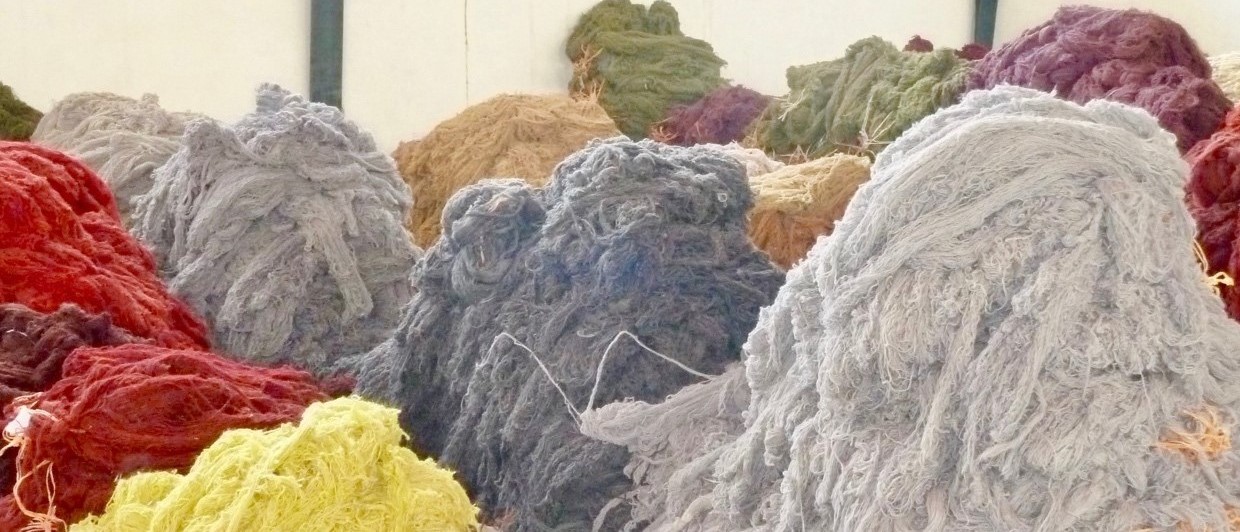
Step 3: The knotting
Once the wool of the fat-tailed sheep has dried, it is distributed again to the nomad families, ready for processing. The knotting is mostly left to the women, who have no templates in their work. They knot the beautiful rugs in the open air in the Zagros Mountains. As inspiration, the women take experiences from nature or stories from Persian mythology. They knot far away from any hustle and bustle of the city. They are one with nature. Knotting is their passion. This joie de vivre is woven into every nomadic rug and is unmistakable when you look at the rugs.
Until a rug is knotted by hand, more than 6 months of pure knotting time pass. After that, the rug is not yet finished, because first the rugs have long wool shag, which must be sheared.
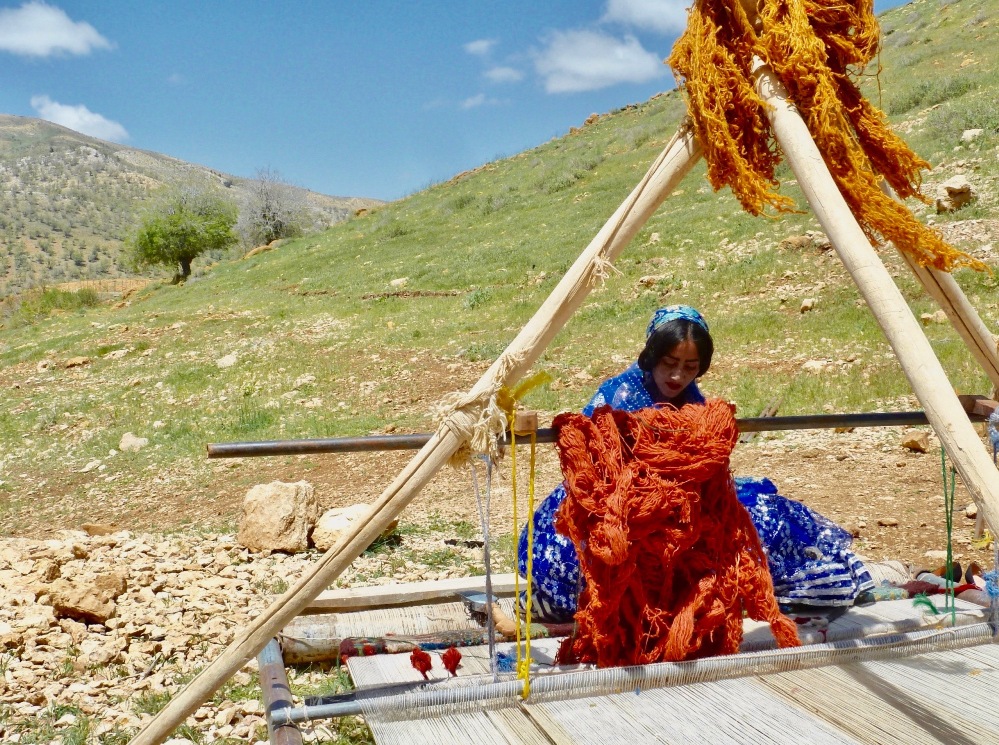
Step 4: The finishing touch
The rugs are then sheared until they are brought to the usual pile height. After that, the rugs are washed with a natural soap and placed in the sun to dry.
After drying, the rugs are nailed to the floor. This process is to stretch the finished rug so that it becomes straight. Finally, protruding threads are cut with scissors and removed.
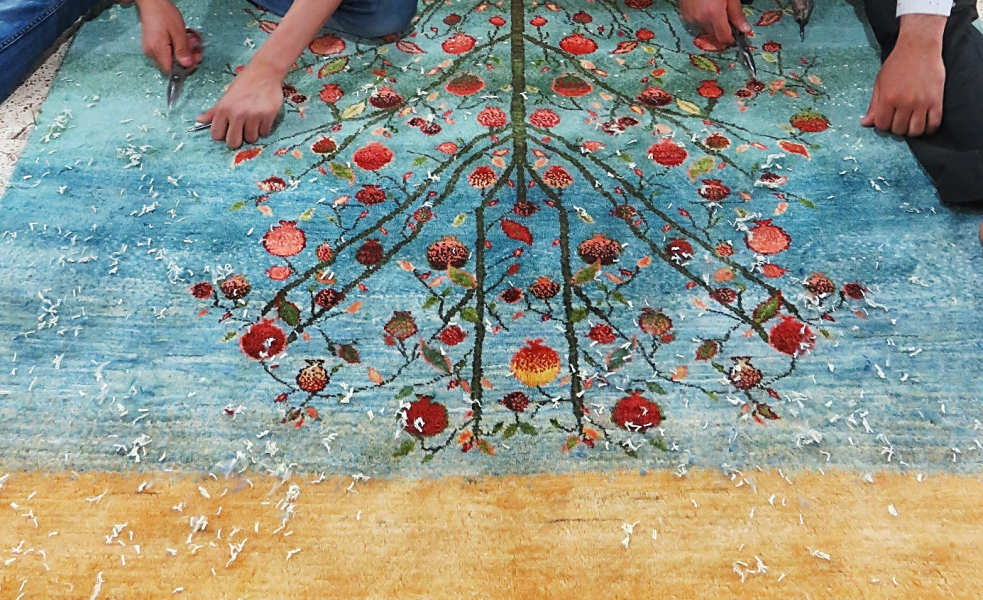
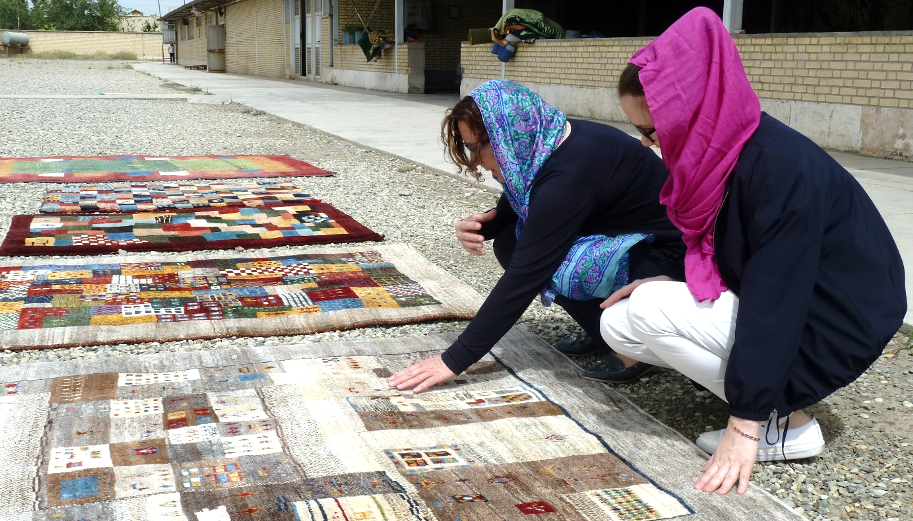
Step 5: The final result
Last but not least, the rugs are collected and shipped by air freight. In our showrooms, they continue to exude the charm and joie de vivre of their nomadic artists. Only the genuine originals from Iran are still knotted today in the Zagros Mountains and only these rugs tell the stories of the nomads' lives. We have been maintaining trade relations with our Iranian partners for decades. This trustful relationship is especially important for us, because we know so exactly how the rugs are made and that colors and wool are 100% up to our high quality standards. Another point that is very important to us personally is that these rugs are guaranteed to be free of child labor. As a member of Care&Fair, this is a concern that applies to all our rugs. Several times a year we travel unannounced to the countries of origin of our rugs to make our own contribution against child labor and for good working conditions.
